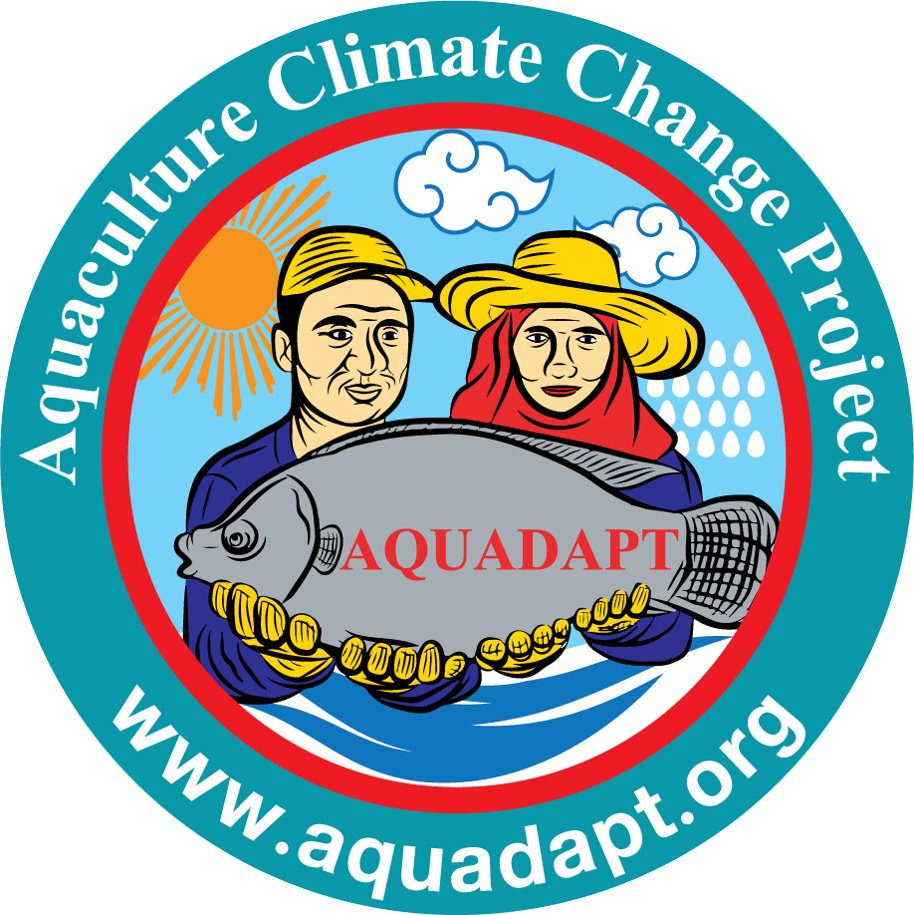
Until recently, the impacts of climate change on aquaculture were assumed to be low and adaptation thus considered non-essential for aquaculture development. However, over the last decade, work on aquaculture and adaptation grew substantially; important linkages are now acknowledged. Concerns over the impacts of aquaculture on the natural environment, however, persist despite efficiencies in resource use and improvements in feed production, disease detection, breeding stock and water management.
Alongside technical innovation, private standards, community management and government regulations also influence which rearing practices are adopted. Often it is difficult for small-scale aquaculture farms to invest in environmentally friendly practices that would otherwise improve market access.
Climate-related Challenges
Climate change’s effects on aquaculture vary with locality, reared species and risk management practices. Extreme high temperatures, low dissolved oxygen episodes, floods and drought impact on growth, reproduction and survival. Apart from extreme events, warming trends, sea-level rise and ocean acidification also have impacts.
Nature-based Solutions
In response to these environmental and climate challenges, aquaculture stakeholders began to explore Nature-based Solutions (NbS) (IUCN 2022). NbS include: nature-positive solutions, which enhance biodiversity and provision of ecosystem services; nature-dependent solutions, which require nature to be taken care of, so that it can continue to provide needed ecosystem services; and nature-inspired solutions, which use knowledge of natural, biological or ecological processes as a source of innovation.
Nature-independent solutions, which rely on manufactured materials and technological devices, are useful points of comparison.
Aquaculture activities can be a part of nature-based solutions in several ways, namely, aquaculture may be: introduced where previously there was none, for example, to remove excess nutrients or filter suspended solids; maintained as a commercially viable and sustainable land-use, providing ecosystem services to other users of a landscape or seascape; modified to benefit nature more, including conservation of biodiversity; substituted by other practices which are more effective; and removed from places where it is causing significant adverse impacts on aquatic ecosystems.
Example of NbS in Aquaculture
Coastal and marine aquaculture activities may impact, use or provide ecosystem services, apart from food and other goods. The conversion of mangrove forests to intensive shrimp aquaculture ponds reduces carbon sequestration and protection from storms, as well as habitat important for biodiversity. Thus, in Ca Mau province, Vietnam, organic shrimp farming practices were introduced alongside restoration of mangroves. Project funding also encouraged farmers to join a green certification scheme, itself based on payments for ecosystem services provided by the replanted or preserved mangroves (UNEP 2022).

AQUADAPT-Nature
The AQUADAPT-Nature project will increase the available sustainable options for small and medium-scale aquaculture farms that face climate change challenges in Thailand and Vietnam. To this end, it will support the innovation, evaluation, and, where and when appropriate, adoption of inclusive nature-based climate solutions. Such work is urgently needed. Nature-based climate solutions have potential, but are promoted without much information regarding their probable effectiveness. Likewise, little is known about how benefits and risks of such interventions might be shared between genders and across underrepresented groups that are affected by aquaculture development.
Direct evaluation of climate change solutions involving aquaculture rearing systems is a complex task. To make it more tractable we will emphasize practices; what farmers do. Nature-based climate solutions thus become defined as “bundles of aquaculture practices which support, restore or protect ecosystems and biodiversity, while successfully addressing the challenge of adaptation to climate.”
In this way, the project will contribute to make aquaculture development both people-centered and nature-based.
Our multidisciplinary team will engage private and public stakeholders to assess existing and proposed nature-based climate solutions against mainstream commercial practices. The investigation combines qualitative and quantitative methods, from large surveys of practices to interdisciplinary case studies. It will employ scenario-building, cost-benefit analysis, market analysis, political ecology, gender equality and social inclusion lenses and lifecycle approaches.
Aquaculture food systems will likely play a critical role in strengthening food and nutrition security in a changing climate. The project’s findings will inform strategic planning in the aquaculture sectors of Thailand and Vietnam.

Background and Partners
AQUADAPT-Nature (2023-2027) builds upon an earlier project that examined climate change impacts on Northern Thailand’s aquaculture sector (2012-2016) and a follow-up study that focused on climate change adaptation and innovation in the Mekong Region (2017-2020).
Led by the Unit for Social and Environmental Research (USER) at Chiang Mai University in Thailand, the current project includes four key partners: Ubon Ratchathani University, Thailand; The Joint Graduate School of Energy and Environment, Thailand; Can Tho University, Vietnam; and Queen’s University, Canada.
Acknowledgements
This work was carried out with the aid of funding from the Government of Canada’s International Climate Finance Initiative and the International Development Research Centre, Ottawa, Canada.

